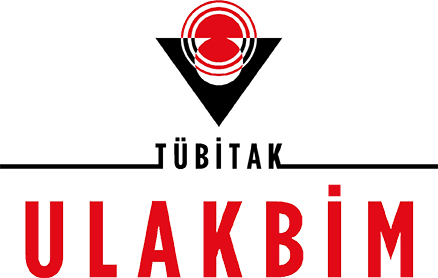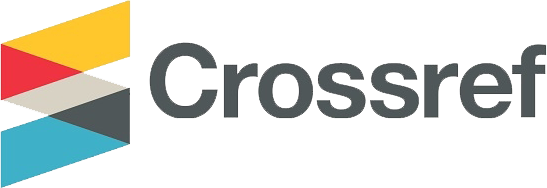Nisan 2016
- Ana Sayfa
- Sayılar
- Nisan 2016
- Kolonoskopi öncesi barsak temizliği için sennosid A+B kalsiyum hazırlık rejimine ananas suyu eklenmesi
Nisan 2016 / (24 - 1)
Kolonoskopi öncesi barsak temizliği için sennosid A+B kalsiyum hazırlık rejimine ananas suyu eklenmesi
Sayfa Numaraları
9-12
Yazarlar
Hüseyin KÖSEOĞLU1, Tevfik SOLAKOĞLU2, Murat BAŞARAN1, Öykü TAYFUR YÜREKLİ2, Aylin DEMİREZER BOLAT2,
Mustafa TAHTACI2, Osman ERSOY1
Kurumlar
1Department of Gastroenterology, Yıldırım Beyazıt University, Faculty of Medicine, Ankara
2Department of Gastroenterology, Atatürk Research and Education Hospital, Ankara
2Department of Gastroenterology, Atatürk Research and Education Hospital, Ankara
Özet
Giriş ve Amaç: Kolonoskopinin tanısal etkinliği barsak hazırlığı rejiminin
başarısına bağlıdır. Daha önce yapılan bir çalışmada polietilen glikol kolonoskopi hazırlık rejimine ananas suyu eklenmesinin barsak temizliğini artırdığı gösterilmiştir. Bu çalışmanın amacı sennosid A+B kalsiyum hazırlık
rejimine ananas suyu eklemenin barsak temizliği üzerine olumlu etkisinin
olup olmadığının değerlendirilmesidir. Gereç ve Yöntem: Kolonoskopi yapılmak üzere ünitemize yönlendirilen hastalar randevu verilmesi esnasında
ananas grubu ve kontrol grubu olarak iki gruba ayrıldı. Tüm hastalara barsak
hazırlığı için işlemden bir gün önce sennosid A+B kalsiyum 300 mg, bol su
ile içmeleri önerildi. Ananas grubunda yer alan hastalara ise buna ek olarak
işlemden bir gün önce bir tam ananası katı meyve sıkacağından geçirerek içmesi önerildi. İşlemi yapan endoskopist barsak temizliğini Ottawa barsak temizliği skalası yardımı ile değerlendirdi ve sonuçlar karşılaştırıldı.Bulgular:
Çalışma için uygun olmayan hastalar dışlandıktan sonra kontrol grubunda
46, ananas grubunda ise 44 hasta değerlendirmeye alındı. Total Ottawa barsak temizliği skalası skoru ve her kolon segmenti için ayrı ayrı hesaplanan temizlik miktarları açısından iki grup arasında istatistiksel olarak anlamlı fark
saptanmadı. Total Ottawa barsak temizliği skalası ananas grubu ve kontrol
grubu için sırasıyla 4,77 ve 5,00 olarak hesaplandı. Sonuç: Sennosid A+B
kalsiyum hazırlık rejimine ananas suyu eklemenin barsak temizliği üzerine
olumlu katkısı saptanamamıştır.
Anahtar Kelimeler
Ananas suyu, barsak temizliği, bromelain, kolonoskopi,
sennoside A+B calcium
Giriş
Colonoscopy is the gold standard method to detect colonic
disorders, especially colorectal carcinoma and adenomatous
polyps. The diagnostic efficacy of colonoscopy depends on
the quality of bowel preparation, and pathologic lesions may
be missed due to inadequate cleansing (1-3). Cleansing quality determines quality, difficulty, speed, and completeness of
colonoscopy (1). The detection rate of polyps of any size is
also increased with effective cleansing (1,4).
Polyethylene glycol (PEG)-based solutions and Sodium phosphate (NaP) are widely used cleansing solutions for colonoscopy preparation. The European Society of Gastrointestinal
Endoscopy (ESGE) guideline recommends a split regimen of
4 L PEG solution, and advices against the use of oral NaP for
bowel preparation, because of safety concerns (5). The more common complications seen after NaP include acute renal
failure, hyperphosphataemia, hypocalcaemia, hypokalaemia,
and hyper- or hyponatraemia (5,6). Sennoside A+B calcium
can also be used for colon cleansing. Its efficacy in bowel
cleansing has not been studied widely, but in few studies sennoside A+B calcium was as effective as NaP (7-9).
Pineapple juice contains a proteolytic enzyme, called bromelain (10). Pineapple juice drinking has been shown to be effective in the dissolution of undigested food in the stomach
and for phytobezoars leading to small bowel obstruction (10-
12). It was shown that administration of pineapple juice to 2
liter PEG preparation regime improves the quality of bowel
cleaning (13). At the time this study was performed PEG was not available
in Turkey due to reimbursement policies, and NaP is not recommended for its frequently seen complications. Therefore
we use high dose sennoside A+B calcium for routine colon
cleansing at our colonoscopy unit. The aim of this study is to
assess the effect of adding pineapple juice to sennoside A+B
calcium for colon cleansing.
Olgu
Effective cleaning of the colon prior to colonoscopy is necessary for good endoscopic
visualization and to reduce the potential for missed pathological findings (1-3). Cleansing quality determines quality, difficulty, speed, and completeness of colonoscopy (1). Furthermore suboptimal bowel preparation carries a higher cost and
increases the cost by 12-22% (15). Because the critical importance of preparation quality, and the outcome of suboptimal
preparation, various studies have been evaluated to find the
optimal preparation regimen (5). The ESGE guideline recommends a regimen of 4 L PEG solution, and advises against
the use of oral NaP for bowel preparation (5). Because PEG
was not available in Turkey, we used high dose sennoside
A+B calcium for routine colon cleansing at our colonoscopy unit. Senna laxatives contain anthraquinone derivates that are
activated by colonic bacteria, and the activated derivates have
a direct effect on intestinal mucosa: increasing the colonic
motility, enhancing colonic transit, and inhibiting water and
electrolyte secretion (7). Its use alone has not been popular
(5) and there are few studies comparing sennosides with NaP
(7-9). In these studies sennoside A+B calcium was as effective
as NaP.
Our study assessed the effect of adding pineapple juice to
sennoside A+B calcium for colon cleansing, and showed no
benefit to improve the quality of colon cleansing. Previously,
the proteolytic effect of pineapple juice on a phytobezoar-related intestinal bowel obstruction and on undigested food in a
diabetic patient was shown, (11,12) and based on these data,
Altinbas et al investigated pineapple juice to enhance bowel
cleansing prior to colonoscopic examination (13). To our best
knowledge this study was the only research done with pineapple juice for colonoscopy cleansing to date. They added
one liter of pineapple juice to 2 liter PEG, and found that this
preparation regime may improve the quality of bowel cleansing. But opposite to the above mentioned study we could not
show any benefit by adding pineapple juice to bowel cleaning regime. In the study design there are some differences
between our study and Altınbas et al’s study. They used one
liter of packed pineapple juice, whereas we advised to use
freshly squeezed pineapple, because packed juices are usually
processed under high temperature and this heat treatment for
sterilization purposes may contribute to some components
be denatured, especially bromelain (16). The discrepancy between these studies may be because of the different preparation and amounts of the pineapple juice. Another difference
is the colon preparation regimen. We used sennoside A+B
calcium, whereas they used PEG as preparation, and the benefit of pineapple juice may be limited to PEG use. In another
study investigators have shown that bromelain exerts inhibitory effects on intestinal motility in mice, which may also
complicate colon cleaning (17).
The rate of adequate bowel preparation in our total study
group is 57.8 % and is low compared to other studies with
senna preparations, (8, 9, 18) which could be because of endoscopists interpretation of colon cleansing.
In conclusion, adding fresh squeezed pineapple juice to sennoside A+B calcium has no beneficial effect on increasing colon cleansing before colonoscopy.
Acknowledgments
The authors thank nursing staff for data collection and management.
Gereç ve Yöntem
The study included patients who were admitted to our gastroenterology department at Ankara Atatürk Education and
Research Hospital for elective colonoscopy between April
2014 and September 2014.
One hundred patients were randomized to either the pineapple or control group at the time of appointment for colonoscopy (n=50 each). All patients were advised to eat a low-fiber
diet and increase water intake for three days before the procedure. They were advised to take sennoside A+B calcium
tablet (X-M tablet®, Yenişehir, Turkey) 40 mg in two divided
doses for the last 5 days prior colonoscopy. They ingested
150mL (300 mg) sennoside A+B calcium solution (X-M diyet solusyon®, Yenişehir, Turkey) between 19 and 22 pm
the day before colonoscopy. In addition to this preparation
regimen the patients in the pineapple group were advised to
squeeze one pineapple via a fruit juice extractor, and to drink
it at the preprocedural day. Eligible patients were aged 18
or older with no known colon diseases (inflammatory bowel
disease, colorectal malignancy or infectious colitis) or prior
bowel surgery. Patients were excluded from the study if they
had experience for colonoscopy with inadequate cleansing.
Patients whose colonoscopy could not be completed because
of stenosing colorectal cancer or patient intolerance were also
excluded from the study. All of the patients included in the
study filled out a questionnaire about the preparation regimen. Patients who were not able to finish the whole regime
were excluded from the study either.
Colonoscopies were performed by the same endoscopist who
was blind to the type of precolonoscopic preparation regime
prescribed. The endoscopist or the gastroenterology nurses
recorded demographic and clinical data: age, sex, height,
weight, body mass index, indication to the examination and
the experience of prior colonoscopy. Procedures were carried
out without conscious sedation, using Olympus video-endoscopes (GIF type-160 and 180).
The endoscopist scored the cleaning of the colonic segments
using the Ottawa Bowel Preparation Scale (OBPS) [14]. OBPS
assesses cleanliness and fluid volume separately. Cleanliness
was assessed with a score from 0 to 4 for the right colon (caecum, ascending colon), the mid colon (transverse and descending colon), and the rectosigmoid region separately. For each colon segment; if the preparation is perfect, a score of 0;
if the mucosa is able to see without aspiration, a score of 1;
if it is necessary to suction liquid stool to adequately see the
colonic wall, a score of 2 and if it is necessary to wash and to
suction, a score of 3 is given. Solid stool which is incapable
of aspiration deserves a score of 4. Fluid volume quantity was
graded from 0 to 2 for the whole colon. The score was calculated by adding the 0 to 4 ratings for each colon segment and
the 0 to 2 fluid quantity rating, so the OBPS has a range from
0 to 14 [14]. The cleanliness for each colon segment and the
total OBPS was compared between groups. Bowel preparation was considered inadequate if the OBPS was ≥6.
All study participants signed a written informed consent and
The Medical Ethics Committee of Yildirim Beyazit University,
Faculty of Medicine at Ankara approved the study design and
methods.
All statistical analyses were performed with the SPSS 20.0
software. The cut-off value for statistical significance was accepted as <0.05. Independent Samples T-Test was used to
determine the differences in variables.
Sonuçlar
Among 50 patients in the control group 2 patients were excluded because they were not able to finish the whole regime,
and 2 patients were excluded because of incomplete colonoscopy due to patient intolerance and stenosing colorectal
cancer. Three patients in the pineapple group were excluded
because of inadequate use of cleaning regimen and 3 patients
were excluded for incomplete colonoscopy due to patient intolerance. The tolerability of bowel preparation regimen was
rated inadequate in 2 of 50 (4%) and 3 of 50 (6%) patients
in the control and pineapple group, respectively. After exclusion 46 patients in the control group and 44 patients in the
pineapple group were included in the analysis.
The baseline demographic features of the patients were similar between groups. Prior experience for colonoscopy, the
frequency of patient complaining about constipation, and the
existence of previously diagnosed diabetes mellitus were also
similar for each group (Table 1).
The cleanliness for right colon (caecum, ascending colon),
the mid colon (transverse and descending colon), and the
rectosigmoid region each, and the total OBPS was compared
between groups, and no statistically significant difference
was detected (Table 2). The total OBPS for pineapple group
and control group were 4.77 and 5.0, respectively. Adequate
bowel preparation was seen in 25 patients in the control
group (54.3%), and in 27 patients in the pineapple group
(61.4%), but the difference was not statistically significant.
The tolerability did not differ between the groups according to the colonoscopic preparation regime. The percentage of
patients who were able to finish the entire bowel cleansing
regime was 96% in the control group and 94% in the pineapple group. Fourteen patients in the control group (30.4%)
and 16 patients in the pineapple group (36.3%) found it hard
to complete the preparation regimen. Among the pineapple
group 3 patients complained that pineapple juice tastes bad,
and the remaining patients rated it as good.
Tartışma
Effective cleaning of the colon prior to colonoscopy is necessary for good endoscopic
visualization and to reduce the potential for missed pathological findings (1-3). Cleansing quality determines quality, difficulty, speed, and completeness of colonoscopy (1). Furthermore suboptimal bowel preparation carries a higher cost and
increases the cost by 12-22% (15). Because the critical importance of preparation quality, and the outcome of suboptimal
preparation, various studies have been evaluated to find the
optimal preparation regimen (5). The ESGE guideline recommends a regimen of 4 L PEG solution, and advises against
the use of oral NaP for bowel preparation (5). Because PEG
was not available in Turkey, we used high dose sennoside
A+B calcium for routine colon cleansing at our colonoscopy unit. Senna laxatives contain anthraquinone derivates that are
activated by colonic bacteria, and the activated derivates have
a direct effect on intestinal mucosa: increasing the colonic
motility, enhancing colonic transit, and inhibiting water and
electrolyte secretion (7). Its use alone has not been popular
(5) and there are few studies comparing sennosides with NaP
(7-9). In these studies sennoside A+B calcium was as effective
as NaP.
Our study assessed the effect of adding pineapple juice to
sennoside A+B calcium for colon cleansing, and showed no
benefit to improve the quality of colon cleansing. Previously,
the proteolytic effect of pineapple juice on a phytobezoar-related intestinal bowel obstruction and on undigested food in a
diabetic patient was shown, (11,12) and based on these data,
Altinbas et al investigated pineapple juice to enhance bowel
cleansing prior to colonoscopic examination (13). To our best
knowledge this study was the only research done with pineapple juice for colonoscopy cleansing to date. They added
one liter of pineapple juice to 2 liter PEG, and found that this
preparation regime may improve the quality of bowel cleansing. But opposite to the above mentioned study we could not
show any benefit by adding pineapple juice to bowel cleaning regime. In the study design there are some differences
between our study and Altınbas et al’s study. They used one
liter of packed pineapple juice, whereas we advised to use
freshly squeezed pineapple, because packed juices are usually
processed under high temperature and this heat treatment for
sterilization purposes may contribute to some components
be denatured, especially bromelain (16). The discrepancy between these studies may be because of the different preparation and amounts of the pineapple juice. Another difference
is the colon preparation regimen. We used sennoside A+B
calcium, whereas they used PEG as preparation, and the benefit of pineapple juice may be limited to PEG use. In another
study investigators have shown that bromelain exerts inhibitory effects on intestinal motility in mice, which may also
complicate colon cleaning (17).
The rate of adequate bowel preparation in our total study
group is 57.8 % and is low compared to other studies with
senna preparations, (8, 9, 18) which could be because of endoscopists interpretation of colon cleansing.
In conclusion, adding fresh squeezed pineapple juice to sennoside A+B calcium has no beneficial effect on increasing colon cleansing before colonoscopy.
Acknowledgments
The authors thank nursing staff for data collection and management.
Kaynaklar
1. Froehlich F, Wietlisbach V, Gonvers JJ, et al. Impact of colonic cleansing on quality and diagnostic yield of colonoscopy: the European Panel of Appropriateness of Gastrointestinal Endoscopy European multicenter study. Gastrointest Endosc 2005;61:378-84.
2. Cappell MS, Friedel D. The role of sigmoidoscopy and colonoscopy
in the diagnosis and management of lower gastrointestinal disorders:
endoscopic findings, therapy, and complications. Med Clin North Am
2002;86:1253-88.
3. Leaper M, Johnston MJ, Barclay M, et al. Reasons for failure to diagnose colorectal carcinoma at colonoscopy. Endoscopy 2004;36:499-
503.
4. Cheng CL, Kuo YL, Liu NJ, et al. Impact of bowel preparation with
low-volume (2-Liter) and intermediate-volume (3-Liter) polyethylene
glycol on colonoscopy quality: a prospective observational study. Digestion 2015;92:156-64.
5. Hassan C, Bretthauer M, Kaminski MF, et al. Bowel preparation for
colonoscopy: European Society of Gastrointestinal Endoscopy (ESGE)
guideline. Endoscopy 2013;45:142-50.
6. Belsey J, Epstein O, Heresbach D. Systematic review: adverse event
reports for oral sodium phosphate and polyethylene glycol. Aliment
Pharmacol Ther 2009;29:15-28.
7. Manukyan MN, Tolan K, Severge U, et al. Prospective randomized
comparison of oral sodium phosphate and sennoside A+B calcium
lavage for colonoscopy preparation. Surg Laparosc Endosc Percutan
Tech 2011;21:90-3.
8. Bektas H, Balık E, Bilsel Y. Comparison of sodium phosphate, poly-
ethylen glycol and sena solutions in bowel preparation. A prospective,
randomized-controlled clinical study. Dig Endos 2005;17:290-6. 9. Sucullu I, Filiz AI, Okul O, et al. Comparison of sodium phosphate
and sennoside solutions in bowel preparation before colonoscopy:
prospective randomized trail. Kolon Rektum Hast Derg 2008;3:133-7.
10. Feffer JL, Norton RA. Dissolution of phytobezoar using pineapple
juice (letter). JAMA 1976;236:1578.
11. Simsek Z, Altinbas A, Yuksel I, et al. Effective treatment with pineapple juice in small bowel obstruction due to phytobezoar in a gastrectomized patient. Dig Endosc 2011;23:197.
12. Altınbas A, Ekiz F, Yılmaz B, et al. Dissolution of undigested food in a
diabetic patient’s stomach by drinking pineapple juice. Endocr Pract
2011;17:522-3.
13. Altınbas A, Aktas B, Yılmaz B, et al. Adding pineapple juice to a poly-
ethylene glycol-based bowel cleansing regime improved the quality of
colon cleaning. Ann Nutr Metab 2013;63:83-7.
14. Rostom A, Jolicoeur E. Validation of a new scale for the assessment of
bowel preparation quality. Gastrointest Endosc 2004; 59:482-6.
15. Rex DK, Imperiale TF, Latinovich DR, et al. Impact of bowel preparation on efficiency and cost of colonoscopy. Am J Gastroenterol
2002;97:1696-700.
16. Majid A, Adibah F, Abdul Gani M, et al. Stability of bromelain-polyphenol complex in pineapple juice. Jurnal Teknologi 2008;49:27-38.
17. Borrelli F, Capasso R, Severino B, et al. Inhibitory effects of bromelain,
a cysteine protease derived from pineapple stem (Ananas comosus),
on intestinal motility in mice. Neurogastroenterol Motil 2011;23:745-
e331.
18. Amato A, Radaelli F, Paggi S, et al. Half doses of PEG-ES and senna
vs.high-dose senna for bowel cleansing before colonoscopy: a randomized, investigator-blinded trial. Am J Gastroenterol 2010;105:675-81.



